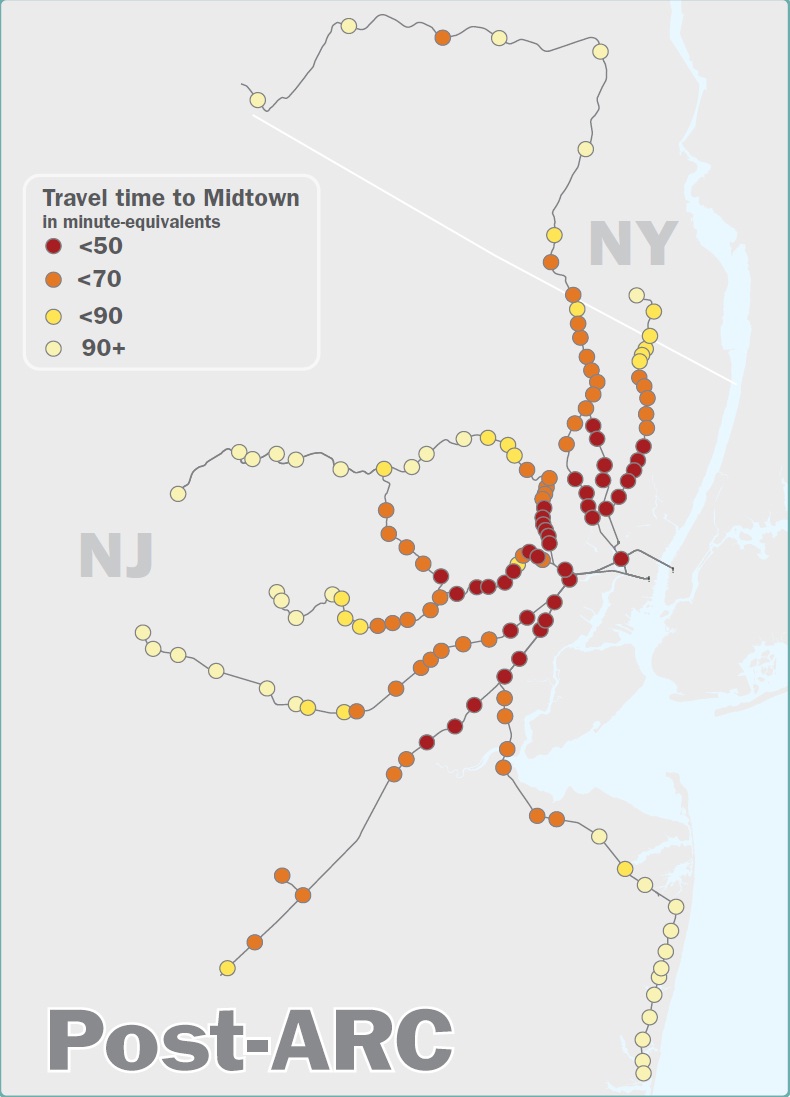New Jersey Future Blog
TDR Implementation – Keen Interest, Slow Progress
June 1st, 2007 by Chris Sturm
-
 Just over three years ago, the State Transfer of Development Rights (TDR) Act was signed into law, authorizing municipalities across New Jersey to adopt programs to “transfer” potential development from conservation areas to designated growth areas, typically at higher densities than would otherwise be permitted. TDR thus provides towns with an alternative to zoning for low-density sprawl.
Just over three years ago, the State Transfer of Development Rights (TDR) Act was signed into law, authorizing municipalities across New Jersey to adopt programs to “transfer” potential development from conservation areas to designated growth areas, typically at higher densities than would otherwise be permitted. TDR thus provides towns with an alternative to zoning for low-density sprawl. -
Since then, thirteen communities have received state funding to develop TDR programs: the townships of Alexandria, Berkeley, Frankford, Hillsborough, Hopewell (Cumberland County), Mannington, Montgomery, Ocean (Ocean County), Oxford, Washington (Mercer County), Stafford, Woolwich and the Borough of Fanwood.
-
The Highlands Act of 2004 called for creation of a regional TDR program, expected to be released later this year. At least three communities have sought or will seek funding to explore the possibility of becoming Highlands receiving districts: Clifton, Lopatcong, and Prospect Park.
-
Two municipalities are poised to launch their TDR programs. Woolwich will use TDR to help protect more than 4,100 acres of farmland by transferring development potential to two mixed-use regional centers. The Borough of Fanwood plans to use TDR to preserve the character of the Fanwood Park Historic District and promote higher-density redevelopment near its train station.
-
Most of the remaining communities continue to develop their TDR programs, but progress is slow as they grapple with the complexities of planning for growth.
How the State Can Help
TDR programs complement the Green Acres and Farmland Preservation programs by offering a means to place land “off limits” to development using a minimum of public funds. Consider the Pinelands, where development transfers have protected more than 54,000 acres of land since 1981. Or Chesterfield Township in Burlington County, where where 2,200 acres have been formally preserved through the transfer of development rights (with many more in process), and a new village center is under construction.
With municipal interest so high, why does it take so long to get programs off the ground? First, local officials must educate their constituents on what’s involved and win support. Then, they face the task of choosing a growth area and preparing it for development. This involves getting a “green light” from state regulatory agencies regarding the proposed location and amount of growth, demonstrating the ability to provide water and wastewater infrastructure, affordable housing, roads and sidewalks, proper highway access, and capital facilities such as schools and parks. Then, the municipality must plan to fund all this based on property tax revenues that are anticipated, but not yet in hand.
State government can actively support these communities through:
-
Finances. Helping TDR towns manage the “fiscal shock” of rapid growth—by granting them the authority to adopt impact fees, giving priority capital funding for roads, sewers and parks, and offering financial assistance to offset the daunting cost of educating new schoolchildren. (This is especially critical for regional transfer programs.)
- Leadership. Designating a “point person” in state government with the expertise and clout to facilitate interagency discussion and timely permit processing and decision-making. Continuing to send state officials to the locality to help cultivate support.
- Predictability. Ensuring regulations are predictable, and that new state rules and regulations, such as the proposed water quality rules, facilitate center-based development.
- Guidance. Continuing to provide planning grants and interagency technical assistance to guide municipalities in designating areas for growth and areas for preservation.
With open land becoming scarcer, and thus more precious and expensive, New Jersey must maximize the effectiveness of every preservation tool available, including TDR.
If you have any questions about this issue of Future Facts, please contact Chris Sturm, Senior Director of State Policy.
















